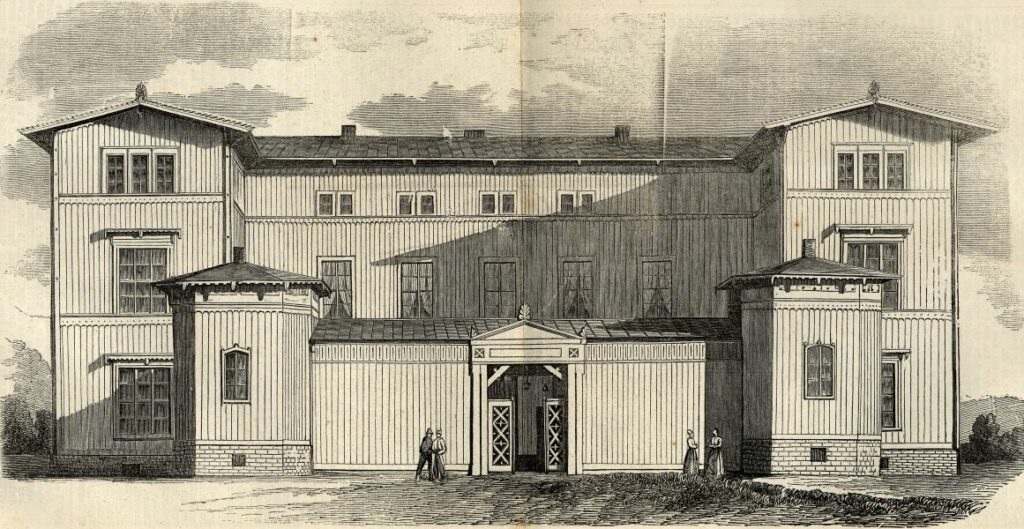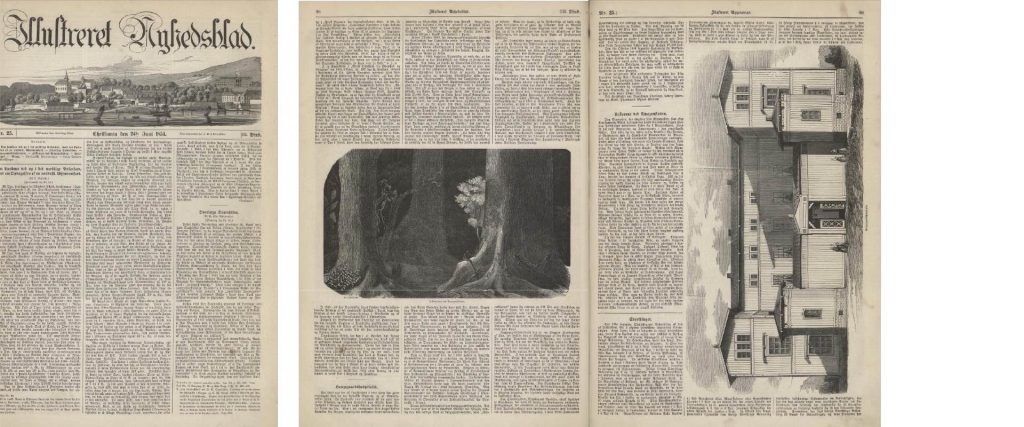Lungegård Hospital
Before 1833, the medical profession had done little for leprosy in our country, and nothing had been done by the state administration. People affected by leprosy were left to their own sad fate, and Reknæs Hospital in Molde and St. Jørgen’s in Bergen were the only asylums where a small number could take refuge. But in the aforementioned year, Rector Holmboe from Bergen, probably encouraged by a conversation he had had with Dr Hjort the previous year, raised the matter in high circles and went on to propose that something should be done to help the miserable sick. Because of this, a commission was appointed in Bergen, but it tended its office so badly that the whole thing would have been forgotten if the representatives of the city of Bergen, among them Holmboe, had not in 1836 submitted proposals to the Storting for the establishment of sanatoriums for leprosy patients. The Storting, which found the matter of great interest, both for the sake of those suffering and for the sake of the risk to the whole country, decided that the Ministry of Education and Church Affairs should be asked to carry out whatever studies it considered appropriate, and to inform the next Storting of the results of the same.
As a consequence, a Royal Commission was appointed in 1837 to investigate and deal with the matter further, and one of the Commission’s members, Dr Hjort, was awarded a travel scholarship to learn about the nature and treatment of skin diseases abroad. The result and outcome of the Commission’s work were proposals for the establishment of more sanatoriums in the parts of the country in which leprosy was prevalent. As the necessary funding for the furtherance of the matter, in accordance with the plan drawn up by the Commission, could not be counted on, the matter was not submitted to the Storting sitting in 1842. However, on the basis of a private proposal put forward by the representatives of Bergen, represented by Holmboe, the Storting, in accordance with the Commission’s proposal, granted the necessary funding for the establishment of a sanatorium for leprosy patients in Bergen.
This sanatorium was Lungegård Hospital. It was built on one of the most beautiful sites in Bergen, namely on the western shore of Lungegårdsvandet bay, where the hilltop Seiersbjerget rises about a hundred feet above sea level, and forms a flat stretch of land which, on account of its solid and dry rock foundation, its open position, clean air, and exceptionally beautiful surroundings, in all respects, forms an excellent place for such an asylum. Although near the city, it was so far removed from it, and also so isolated from the road, that its suffering residents were not disturbed by the noise of the city or by the traffic on the road.
Lungegård Hospital was a three-storey wooden building with wings resting on a cellar floor of four ells high. The actual wards were in the wings, facing south and north, one for men and the other for women. Each wing had four very spacious and bright rooms, each furnished for ten patients, so that the hospital as a whole could accommodate eighty patients in addition to those wanting private rooms. In the central part of the building there were four separate rooms on the ground floor separated by a corridor, two of which were occupied by the assistant physician and two by the bookkeeper. On the first floor there were four wards for patients wanting private rooms. The entire second floor housed workrooms, storage rooms, and a drying loft; in the cellar there was, besides the necessary cellar rooms, a large and spacious kitchen that contained a steaming apparatus, which served not only for cooking, but also for the provision of steam for steam baths and ordinary baths, and for steam washing. From the south side of the building, two corridors, or passages, connected to the bathing facilities, which constituted a two-storey building, where again the different sexes were assigned different rooms.
From the main facade, the north side of the building, there were also two corridors leading to two neatly constructed octagonal buildings that were used as a visitation room and pharmacy. These two tower buildings were joined together by a lower narrow building in between them, in the centre of which was the main entrance to the hospital, and which otherwise housed the porter’s room and the morgue. The whole building was 70 ells long and 60 ells wide. There were gardens and walkways on both sides, and there were also gardens as well as a large walkway at the front. The hospital was laid out according to an expedient plan and made in all its simplicity a good impression. It was designed by architect Nebelong. With the full inventory, the entire hospital cost 27,000 Spd.
The hospital began operating on the first day of October 1849 and, since that time, ten patients have been discharged as healed, and many have found relief there. Considering that this is a disease that for thousands of years has been regarded as incurable, this should be regarded as a very satisfactory result, and must raise and sustain the hope of all those who have worked to bring about a better future for people with this disease.
This beneficent asylum burned down in less than two hours on Christmas night, 24 December, the preceding year, and, owing to the rapidity with which the fire, which had probably gone unnoticed for some time in the upper part of the building, spread, seven people died in the fire, six of whom had leprosy, and one patient was so gravely burned that he died some hours later. At the hospital, Danielssen was the head physician, Løberg the assistant physician and cand. pharm. Nysum the bookkeeper.





